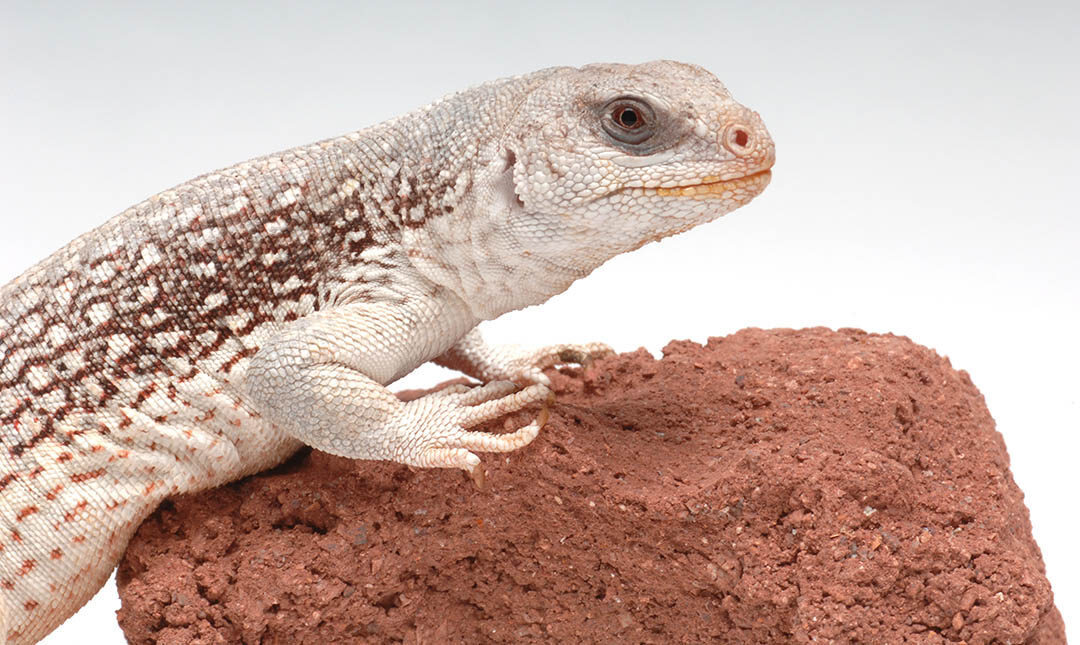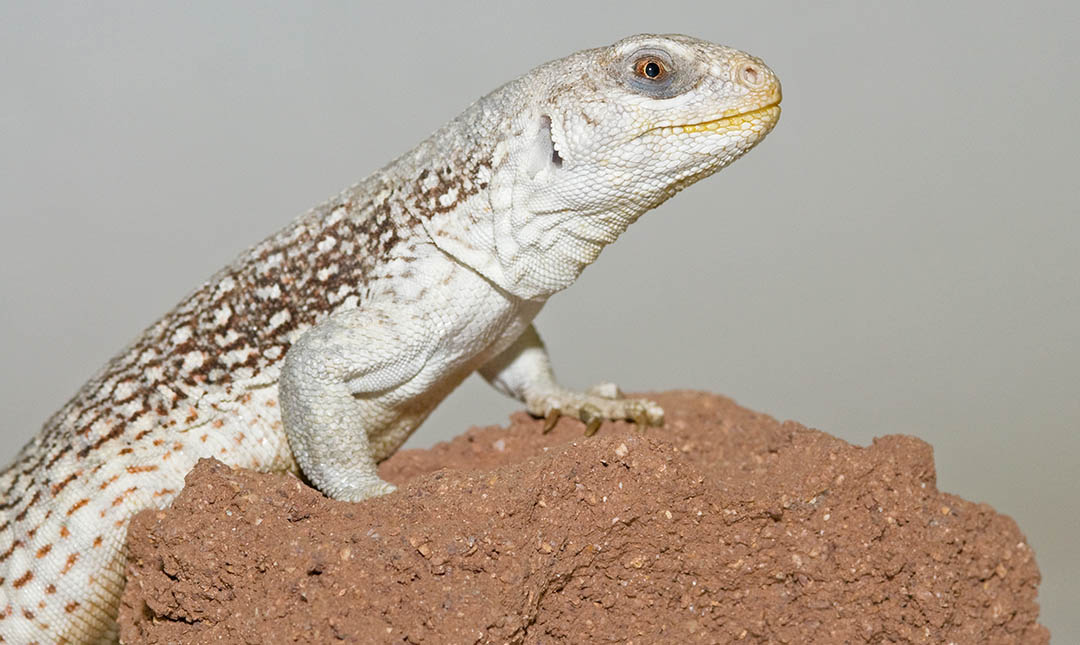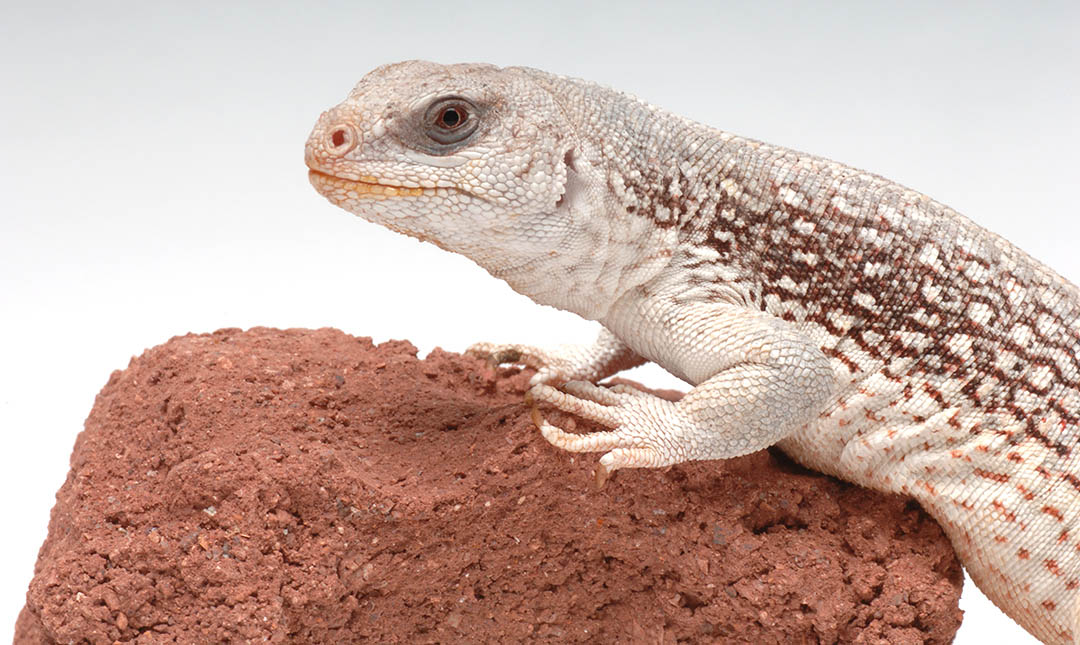About
The desert iguana is one of the most common lizards in the Mojave and Sonoran deserts. While most animals in these arid, hot regions sleep during the day, these lizards are active, able to tolerate extreme heat (daytime temperatures that can reach 115 degrees Fahrenheit). Early in the day, they bask to raise their body temperature—like all reptiles, they rely on ambient warmth to regulate their metabolism. Once they warm up, they forage, searching for flower buds, fruit, and leaves. Their favorite plant may be the yellow flowers of the creosote bush (Larrea tridentata). If temperatures climb too high, they retreat into shade or underground burrows to cool off.
Adaptations that help desert iguanas elude predators—which include foxes, raptors, and snakes—include tan-and-brown scales that provide perfect camouflage. They hide by sneaking into rock crevices or burrows, and they can inflate their bodies to almost twice their normal size, making it very difficult to pry them out of a hiding spot. As with many lizard species, desert iguanas are able to self-amputate their tails—a process known as autotomy—which can distract a predator just long enough to allow the iguana to escape. The tail will eventually regenerate.
Desert iguanas estivate (hibernation for reptiles) during the winter season. In March, they come out of their burrows to search for mates. As an indication that they are ready to breed, both sexes’ torsos change color to a pale pink on the sides. Males may do a few push-ups to impress females. Females lay clutches of three to eight eggs, which hatch in September. Hatchlings are fully independent, and no parental care is provided.
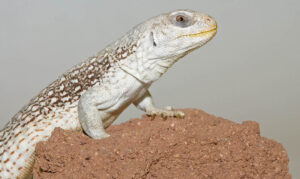
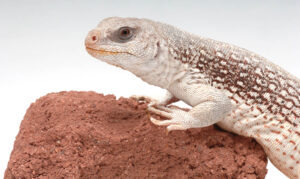
Status
The desert iguana has not been categorized yet by the IUCN.
Habitat
These lizards live in the Mojave Desert region (east-central California, southern Nevada, and western Arizona). They also inhabit the Sonoran Desert area (California, Arizona, Northern Mexico, and Baja California).
Diet
Desert iguanas are largely herbivores. They eat buds, fruits, and leaves. They sometimes eat insects. Most of the water they need is obtained from the food they eat.
Physical Characteristics
Body length is 10 to 16 inches, and weight is two to three ounces. Lifespan is seven to 10 years.

